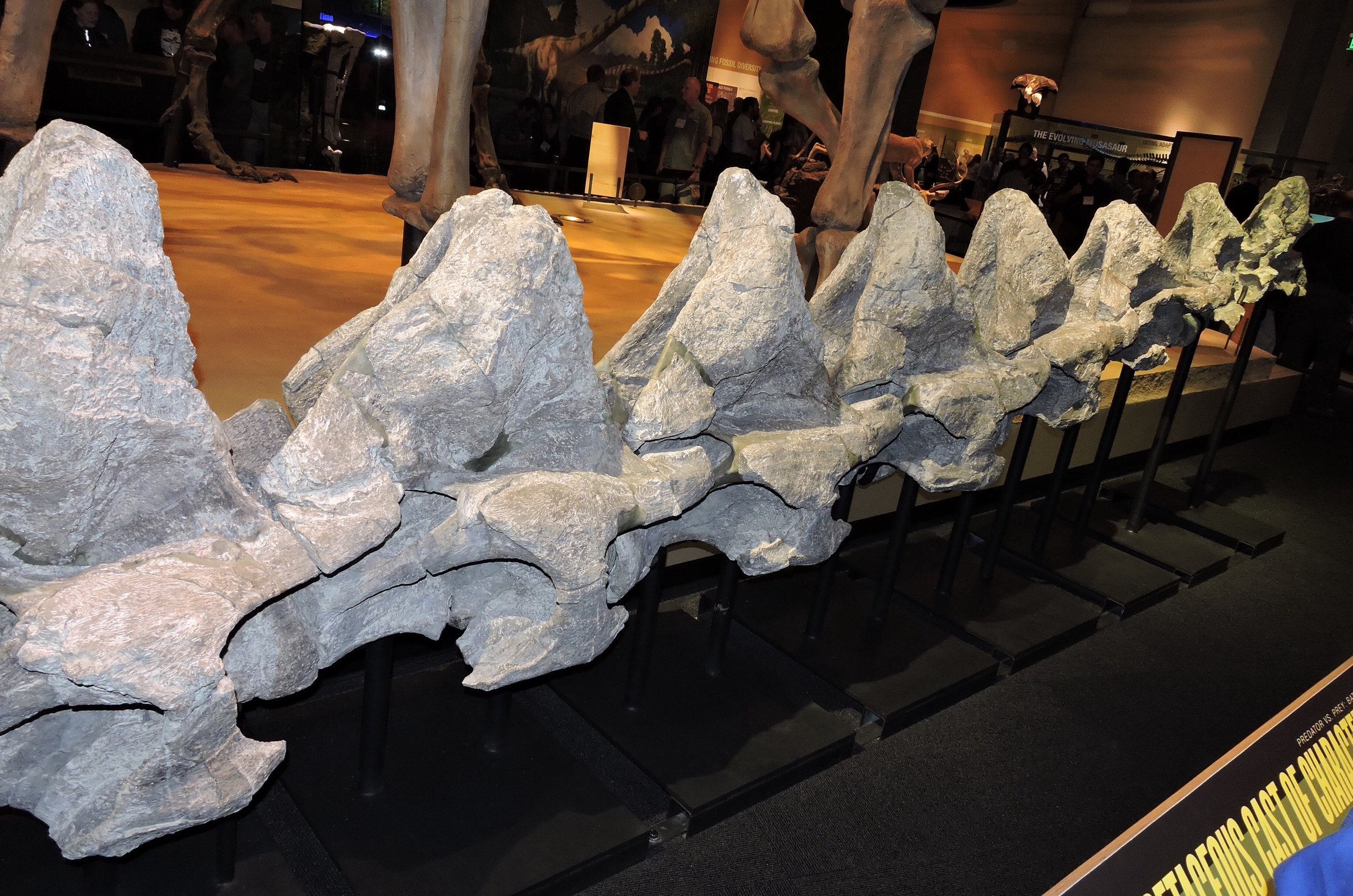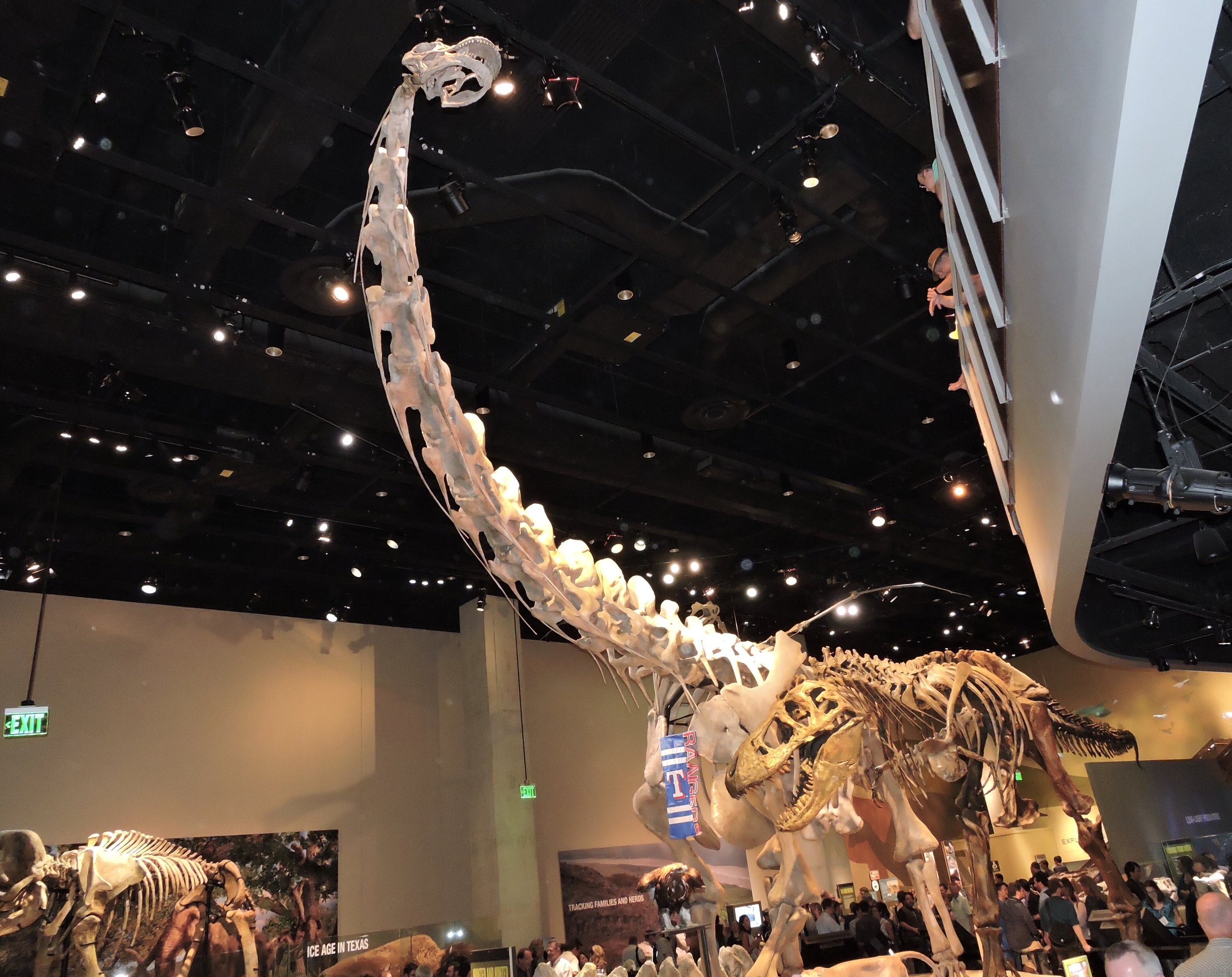 This week I've been attending the annual Society of Vertebrate Paleontology (SVP) meeting, which is being held this year in Dallas. SVP usually is held in a city with a natural history museum, and on Wednesday night the local museum will generally host a welcome reception. So for this week's Fossil Friday I photographed one of the highlights of the Perot Museum of Nature and Science's exhibits, the neck of Alamosaurus.Alamosaurus was a large sauropod dinosaur that has been found in Cretaceous sediments in the southwestern United States; this specimen is from Big Bend National Park in Texas. While not as famous as its older Jurassic relatives like Brontosaurus, Alamosaurus was just as large and impressive. This is easy to see when you realize that in the photo above you can only see 8 neck vertebrae!This image is taken as if you're standing near the base of the neck on the right side, looking forward, so the head would be toward the far right. There were at least a few more vertebrae at the base of the skull that were not preserved in this specimen, and more at the base of the neck as well. In fact, there is a ninth vertebra on exhibit, but the neck is so large that with the reception crowds I couldn't get far enough away to get all nine vertebrae in one photo from this angle. So here are all nine, looking from the front to the back:
This week I've been attending the annual Society of Vertebrate Paleontology (SVP) meeting, which is being held this year in Dallas. SVP usually is held in a city with a natural history museum, and on Wednesday night the local museum will generally host a welcome reception. So for this week's Fossil Friday I photographed one of the highlights of the Perot Museum of Nature and Science's exhibits, the neck of Alamosaurus.Alamosaurus was a large sauropod dinosaur that has been found in Cretaceous sediments in the southwestern United States; this specimen is from Big Bend National Park in Texas. While not as famous as its older Jurassic relatives like Brontosaurus, Alamosaurus was just as large and impressive. This is easy to see when you realize that in the photo above you can only see 8 neck vertebrae!This image is taken as if you're standing near the base of the neck on the right side, looking forward, so the head would be toward the far right. There were at least a few more vertebrae at the base of the skull that were not preserved in this specimen, and more at the base of the neck as well. In fact, there is a ninth vertebra on exhibit, but the neck is so large that with the reception crowds I couldn't get far enough away to get all nine vertebrae in one photo from this angle. So here are all nine, looking from the front to the back:  The Perot Museum asked Research Casting International to produce a cast reconstruction of Alamosaurus based on these vertebrae and other Alamosaurus specimens. The cast is also on exhibit:
The Perot Museum asked Research Casting International to produce a cast reconstruction of Alamosaurus based on these vertebrae and other Alamosaurus specimens. The cast is also on exhibit: The people standing around the exhibit give an idea of scale. If that's not enough, that little theropod dinosaur standing beside Alamosaurus is Tyrannosaurus, and a Columbian mammoth is just visible at the lower left. By any standards, Alamosaurus was a huge animal!For more abut Alamosaurus, and to see photos of this specimen in the field, visit the SV-POW! blog.
The people standing around the exhibit give an idea of scale. If that's not enough, that little theropod dinosaur standing beside Alamosaurus is Tyrannosaurus, and a Columbian mammoth is just visible at the lower left. By any standards, Alamosaurus was a huge animal!For more abut Alamosaurus, and to see photos of this specimen in the field, visit the SV-POW! blog.
